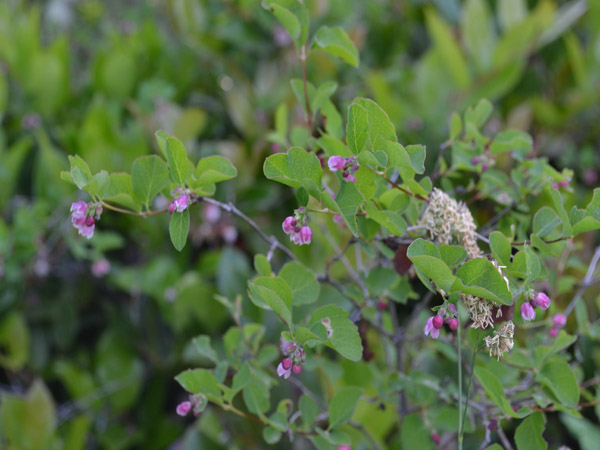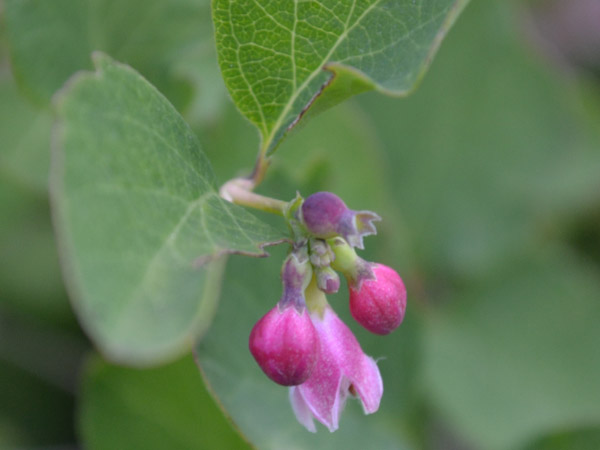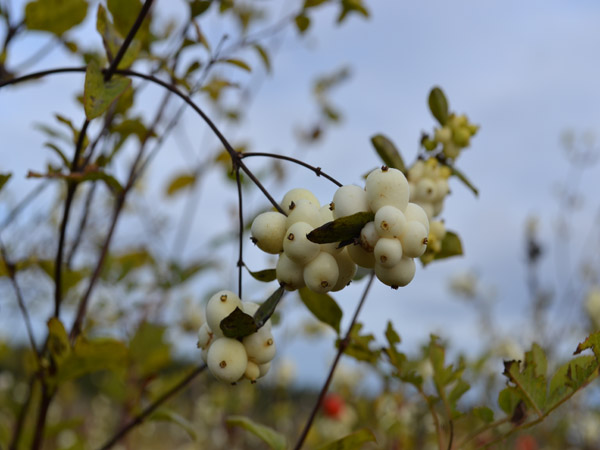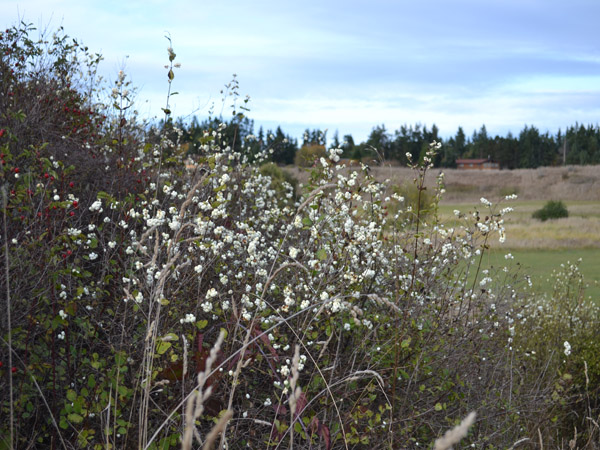Dungeness Recreation Area is a wonderful place to walk and it’s particularly nice to observe the changing of the seasons. This past spring I took pictures of some of the native plants in bloom and remembered this as I’ve watched the season’s changes. Snowberries, shown here, are one of the interesting surprises.
Snowberries have very inconspicuous blossoms, 1/4 inch or less in size. Compared to many other plants in bloom in late spring, they’re the quiet girls at the back of the room. But come Autumn, it’s a very different story!
By summer’s end the blossoms turn to bright white 1/2 inch berries that form a sea of white on the many shrubs in the Recreation Area. They lighten the landscape with a brightness that looks like polka dancers masquerading as ballerinas. Paired with the common bright red rose hips, which I’ll show in another post, they’re an especially beautiful sight.
The folage of the snowberries are browsed by deer and elk. The flowers attract butterflies. And the berries are eaten by many birds and by winter’s end may also serve as a food source for other wildlife.




Beautiful pictures! Thanks for the before and after shots. Have you ever tried growing any? Are they easy to propagate?
We purchased a bundle of snowberries from the Clallam Co. Conservation District at their annual plant sale last year. We got the bundle in March — 10 little twigs, really — and planted them in the worst of conditions. The holes we’d dug for them were completely inundated (we had a lot of flooding). Amazingly, they survived and are coming along pretty well except for some deer browsing. Many natives can be propagated with varying ease, but the CCD native plant sale offers such reasonable prices we’ve gone that route (avg cost is ten plants for $10).
I remember seeing these in the NE part of the state in the winter, I never knew what their name was they are indeed beautiful as are many of our native plants and shrubs.
What a fascinating transition from the spring flowers to the fall white berries.